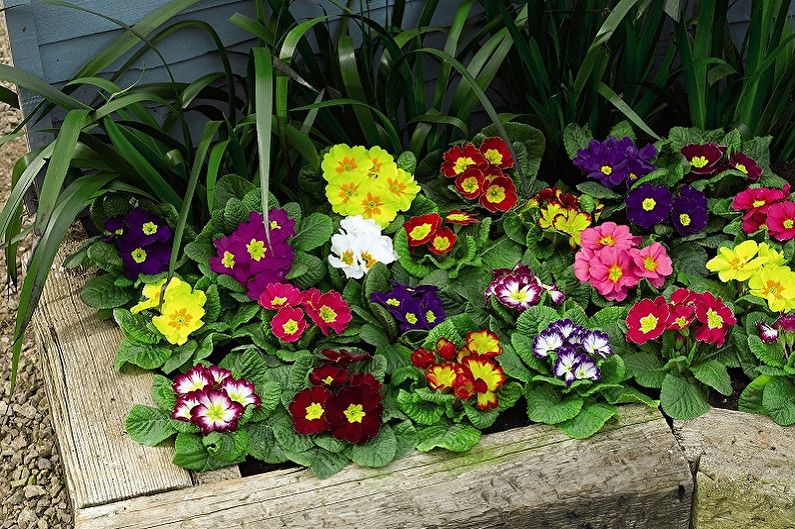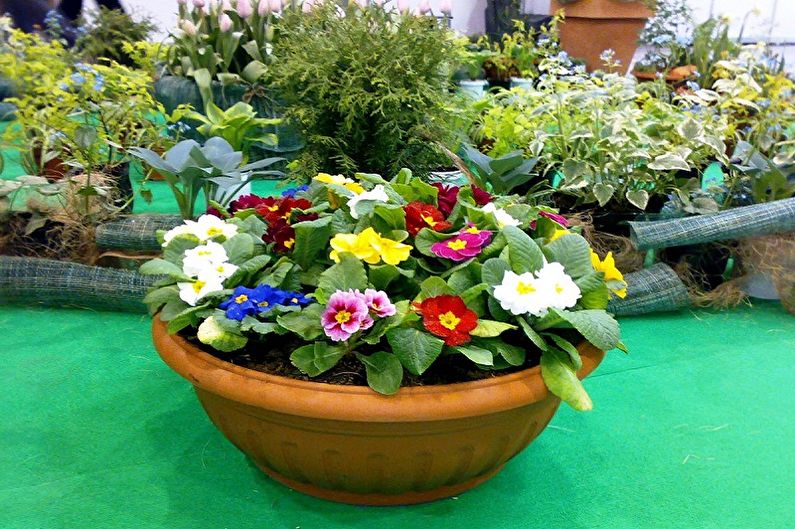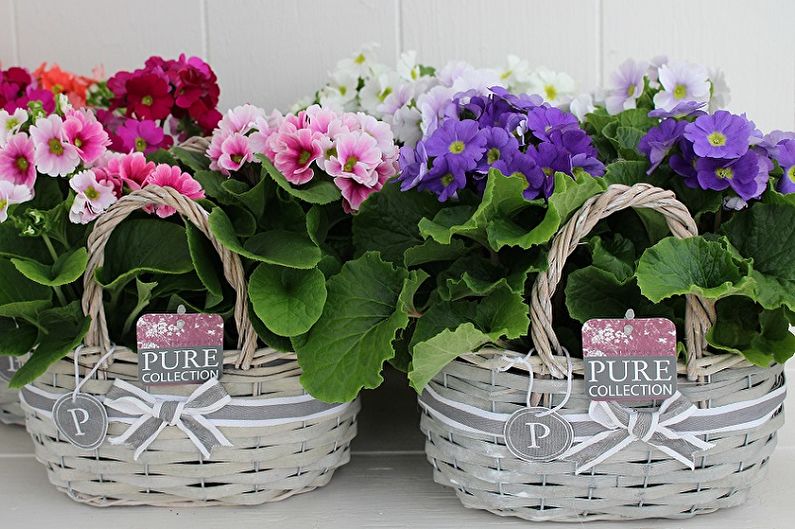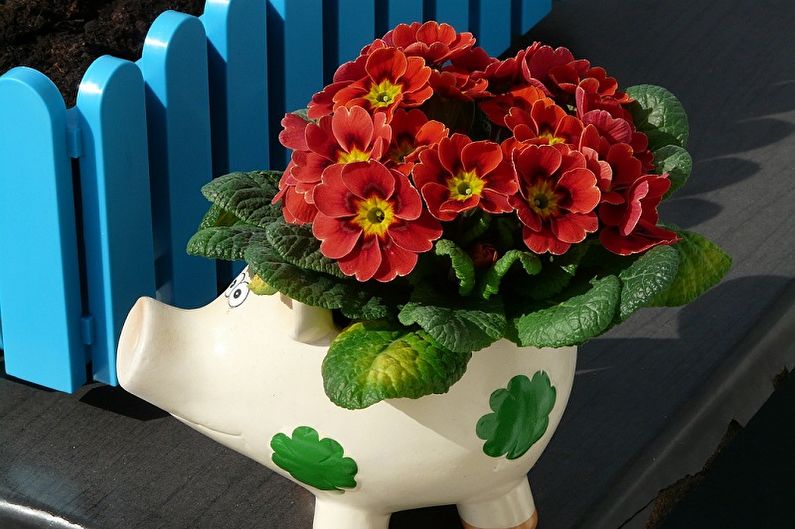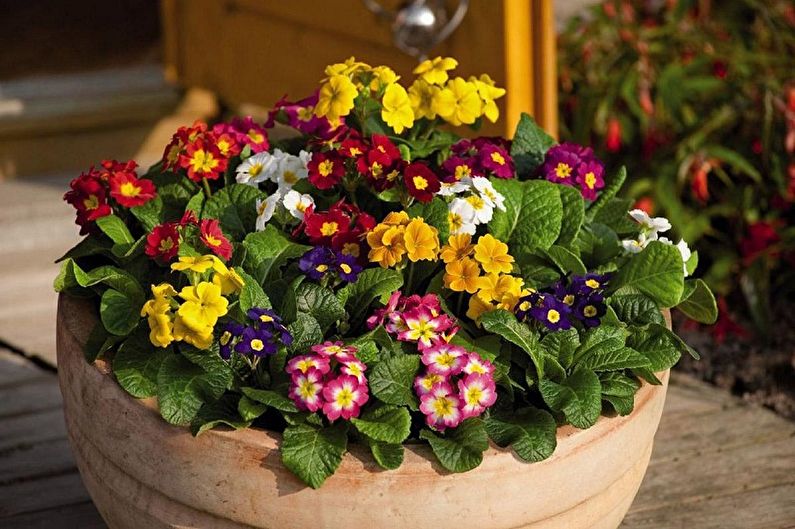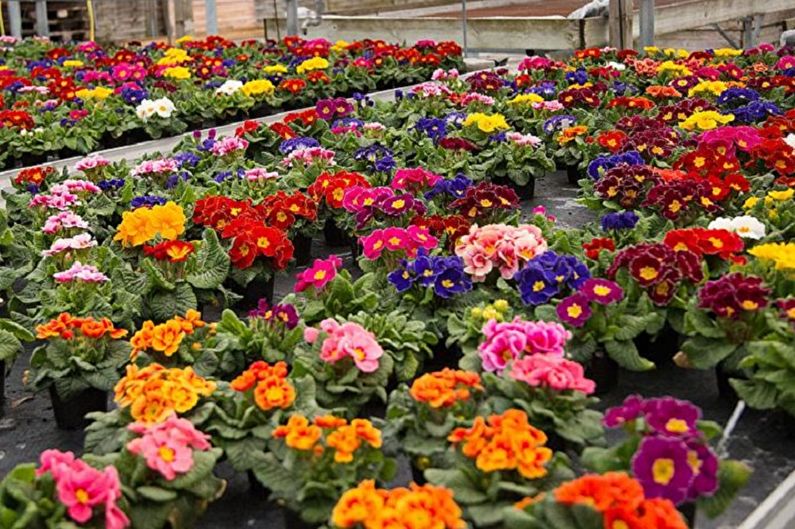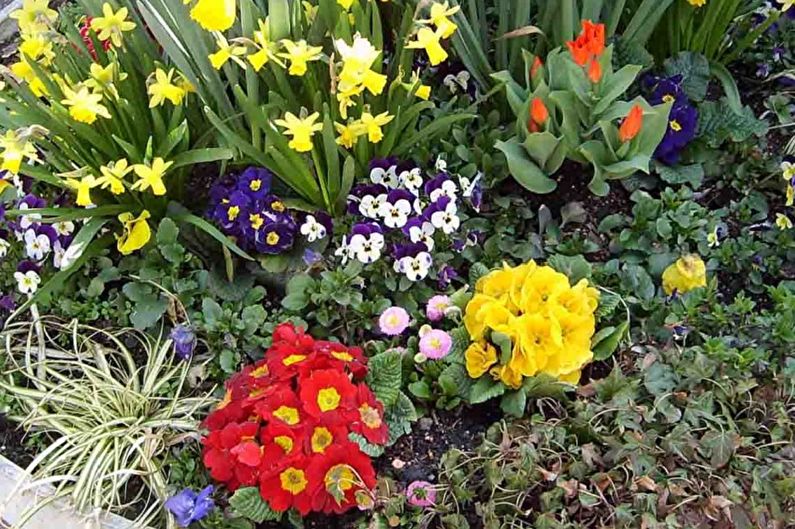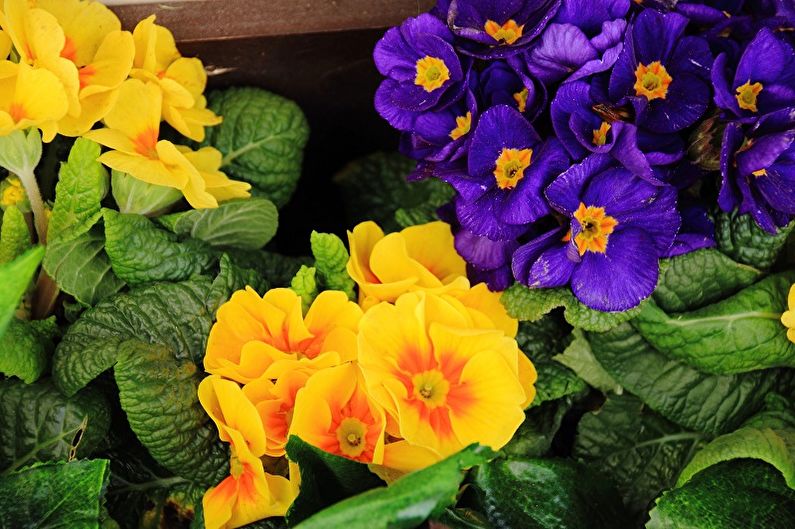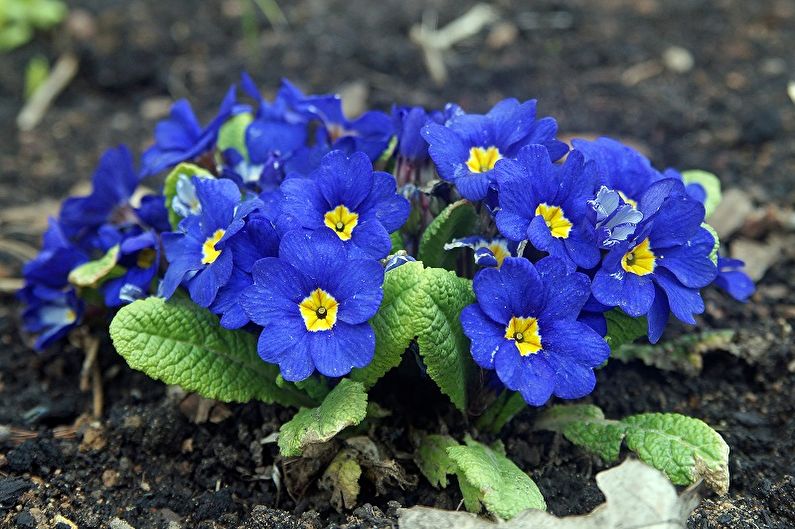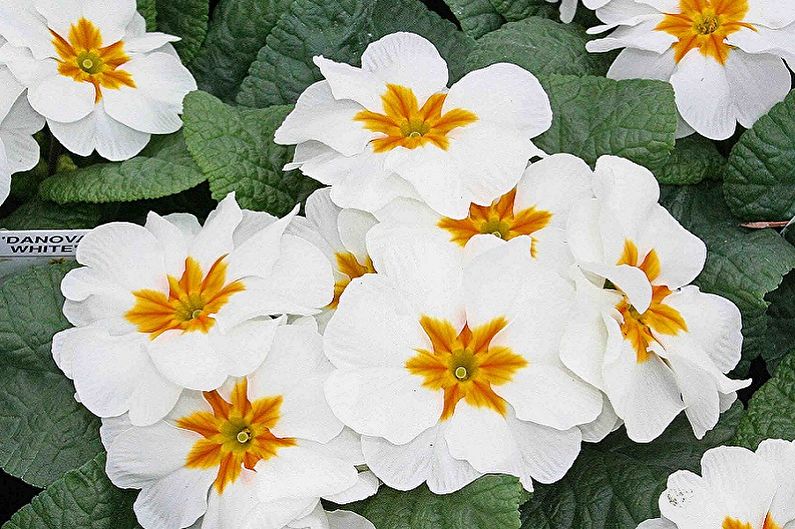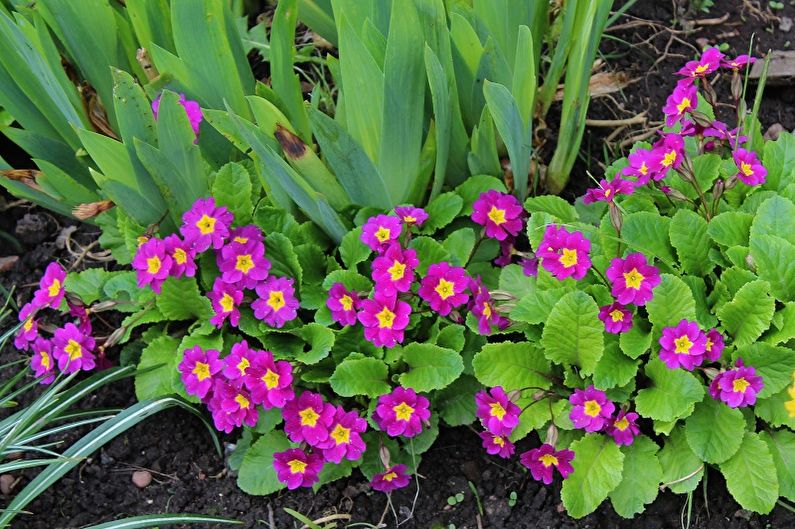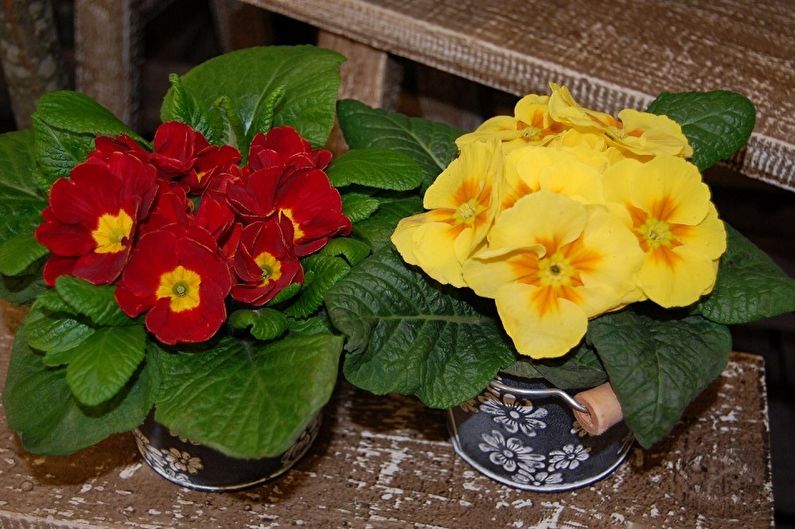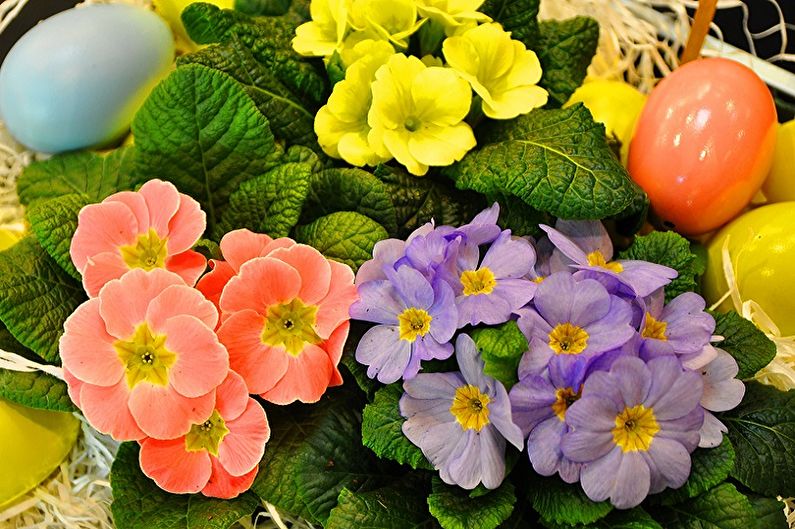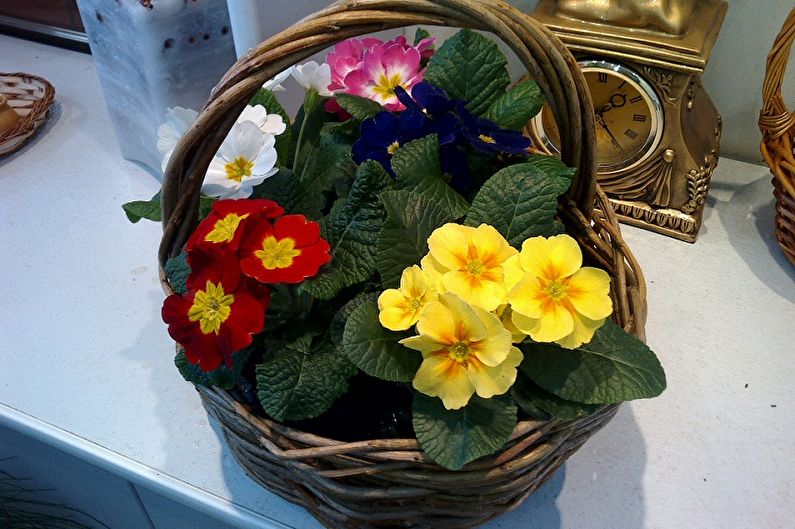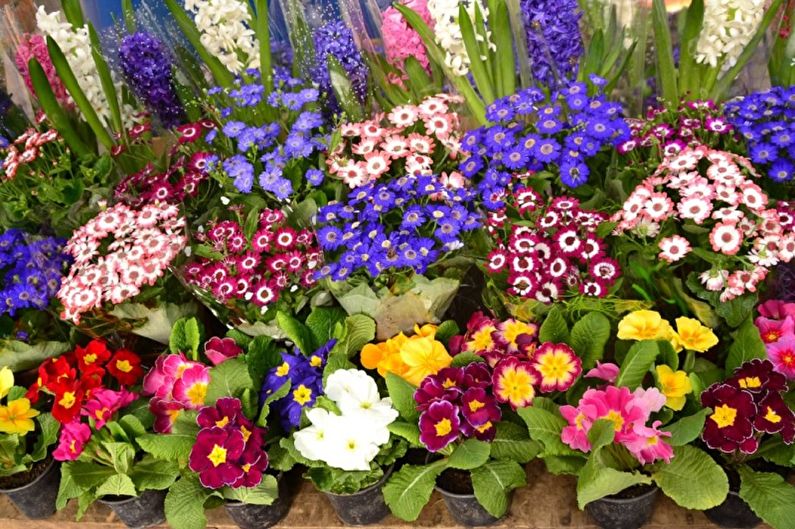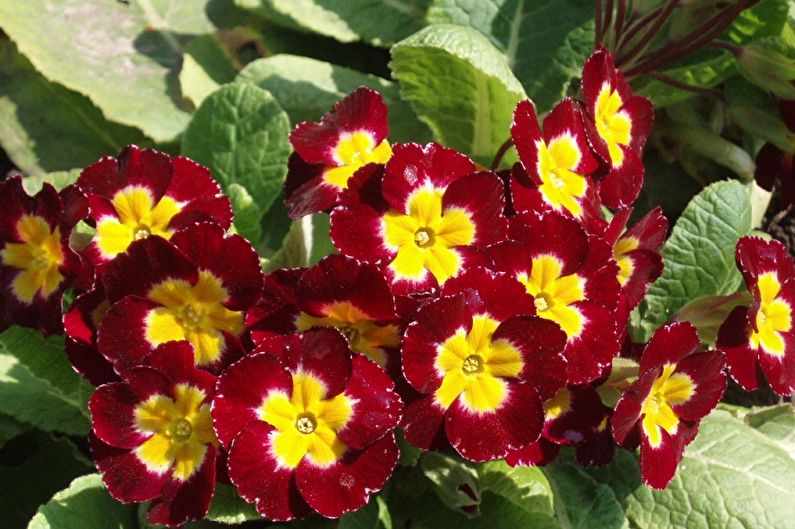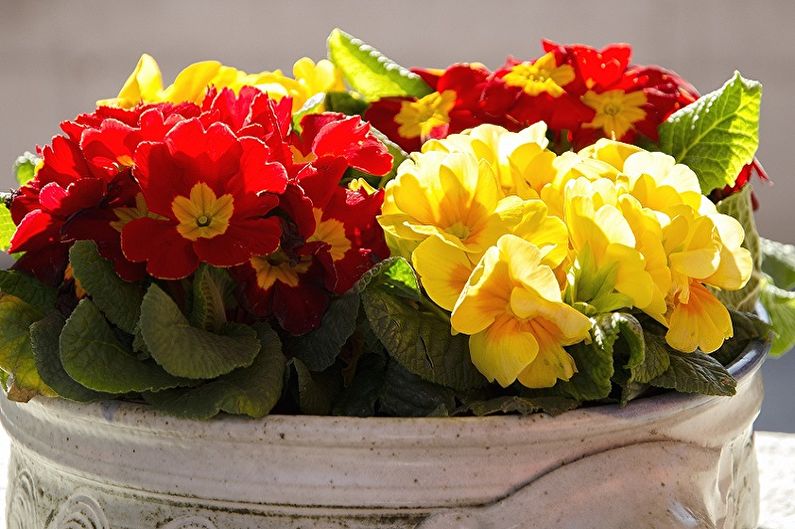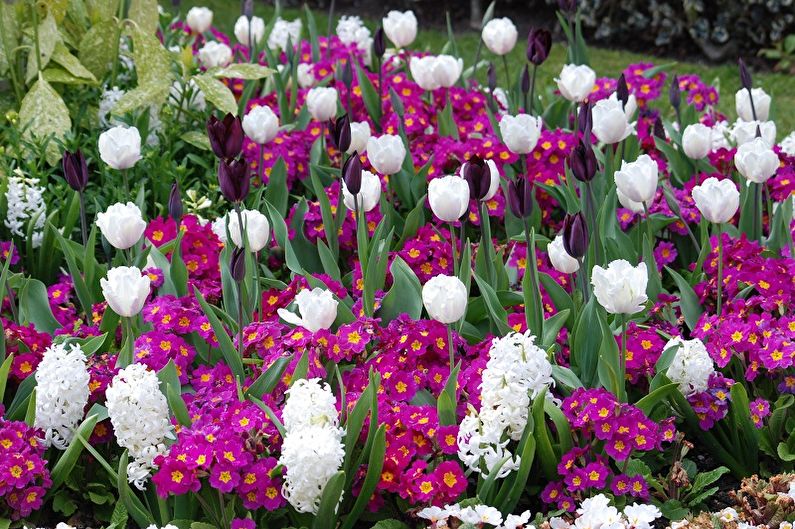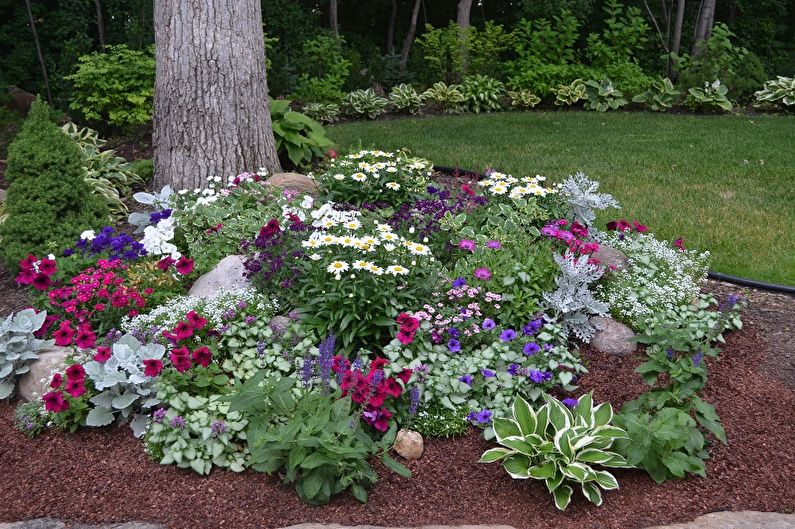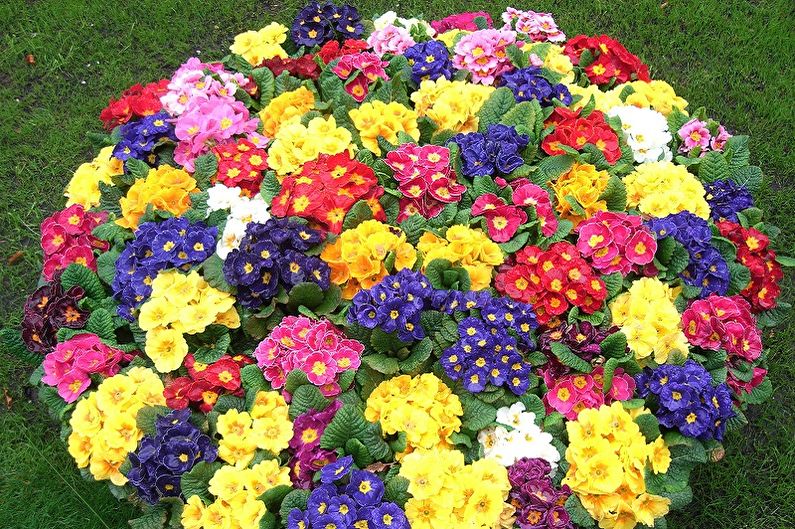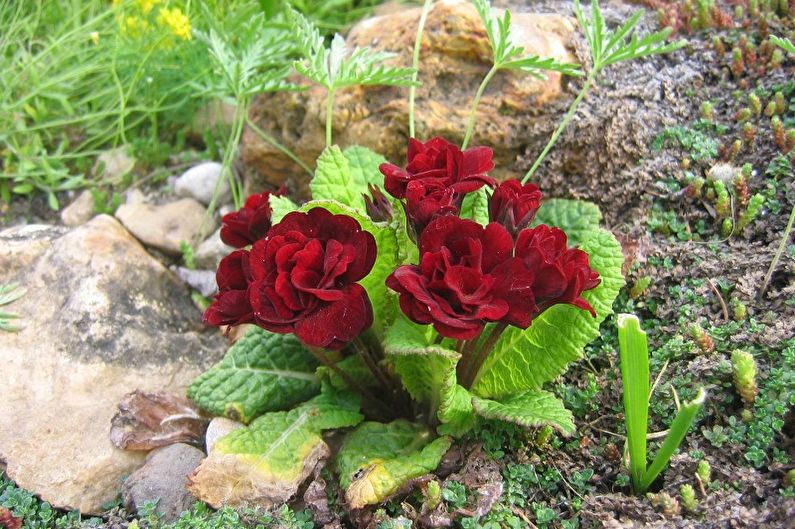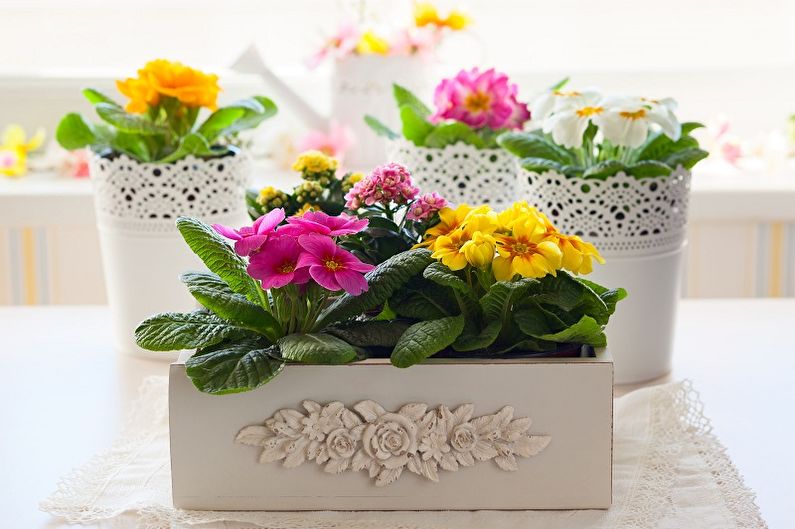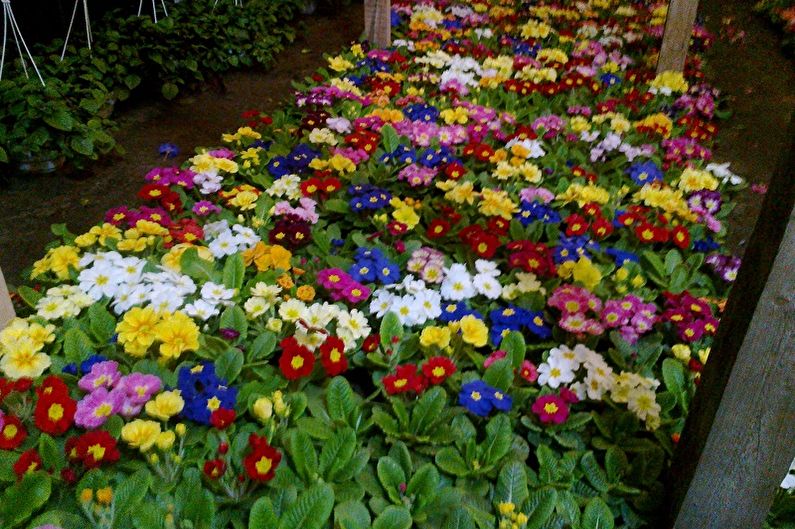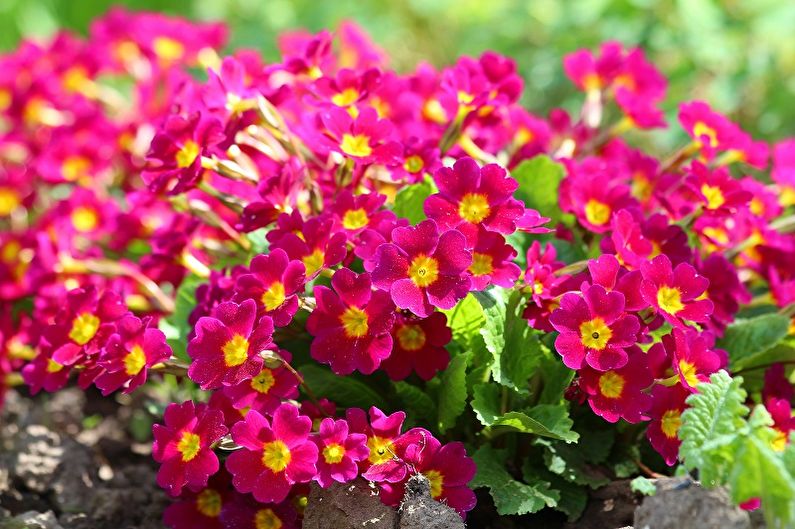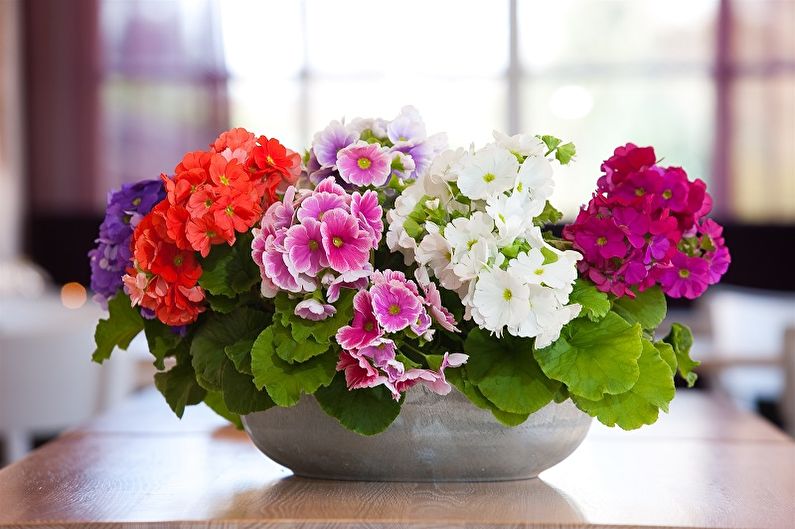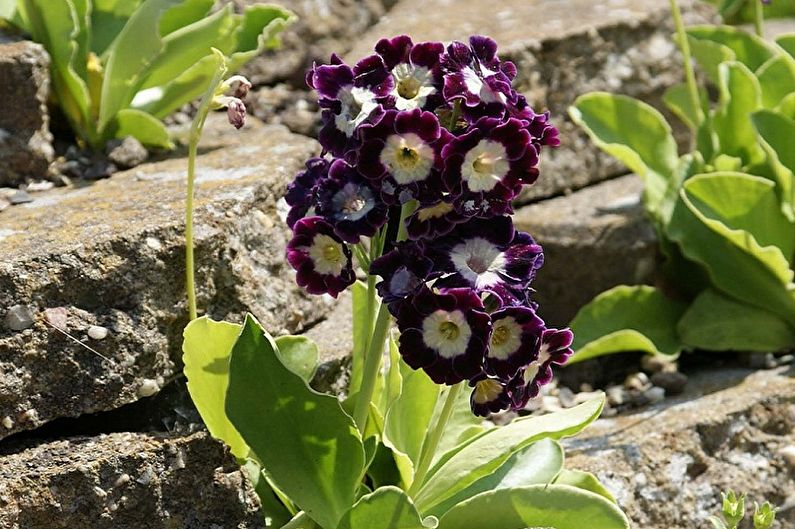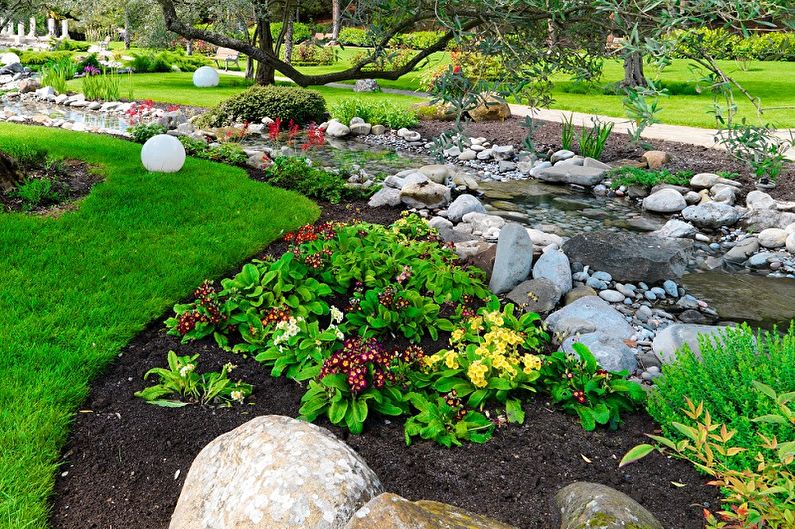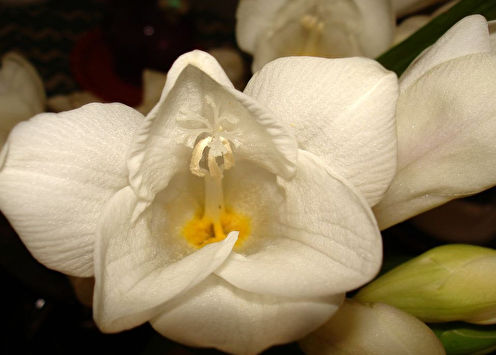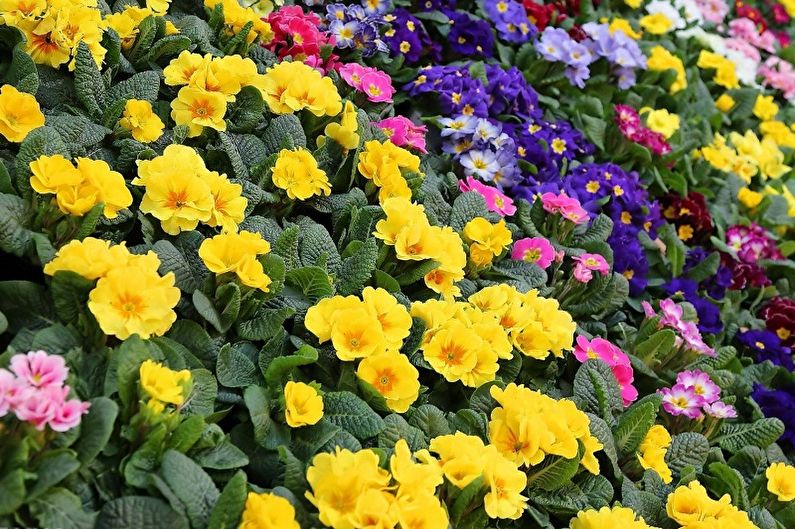
On the hills and edges, the bright petals of primrose bloom before many other flowers. Even its name - Primulaveris - comes from the Latin "primus" - the first. Ancient Germans and Slavs called the sunbells of primroses "spring keys", because one of the wild-growing species of this plant really resembles a bunch of golden master keys. Cultivated varieties of primrose delight florists with a colorful variety of shades and long flowering. Throughout the season, these charming bouquets are a real decoration for window sills, balconies, flower beds, terraces and gardens, cheerfully welcoming the revival of the sun and warmth.
Description and types
Primrose, or primrose, is a common plant in the temperate latitudes of Eurasia and North America. In nature, these flowering herbs are found on mountain slopes, meadows and forest outskirts. It is easy to recognize a primrose by the dense rosette of dense, embossed leaves - in texture they resemble the wool of young sheep, astrakhan fur, which is why the people call the primrose “rams”. With the advent of spring, stems with an umbrella-shaped or spikelet peduncle rise (in high species) from the center of the leaf basket or many large flowers open on short stems, forming a bright “cap” above the green base.
Tall primrose can reach a length of 30–35 cm, flower diameter - 2–4 cm. They feel good in open ground, unpretentious to care. Low, in which the petals are more noticeable and wider, are popular as indoor plants, they are often presented for spring holidays. The breeders' particular pride is terry varieties with lush multilayer flowers resembling open roses.
The palette of shades of primroses is incredibly rich: monophonic alternate with expressive contrasts, delicate gradients with patterns, unusual edging, brush strokes, veins. The central part of the regular five-petalled flowers is most often bright yellow, around which all kinds of combinations of tones look even more saturated.
More than 550 species of plants are ranked as Primrose, but for convenience they can be conditionally divided into several sections.
Dentate primrose
Jagged primroses are distinguished by leaves with small serrations along the edges, as well as a beautiful spherical inflorescence on a long stem. Its height can reach 60–70 cm.
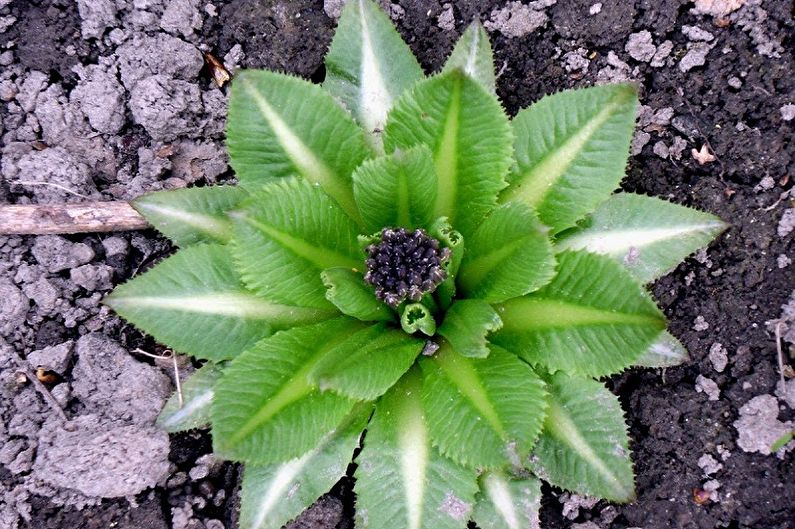
Primrose capitate
It has a similar structure, but since the upper part of the inflorescence blooms slower than the lower bells, the shape of the flower at this time remains flattened. The stem and unopened mini-buds in capitate varieties are covered with white bloom, from which the plant seems “powdered”.
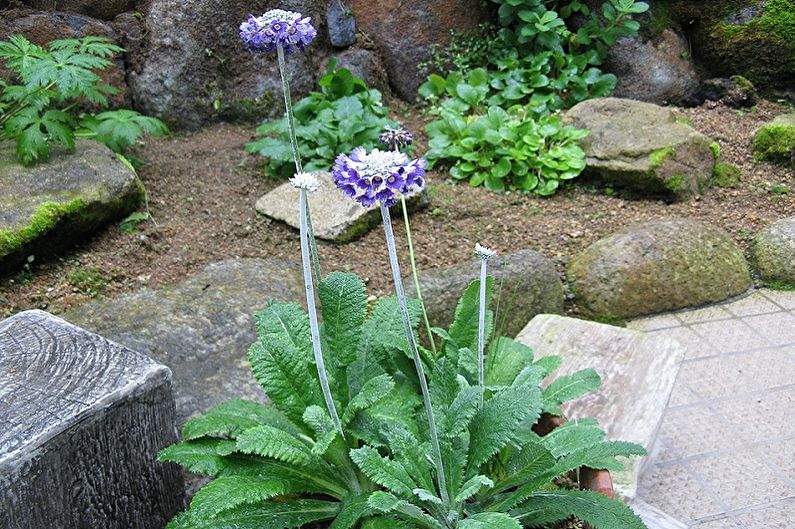
Primrose ordinary
This is a low (15–25 cm) stemless plant with an abundant number of flowers. Representatives of this section are ideally suited for cultivation both indoors and outdoors. They can be used to create live borders, paths, compositions on flower beds and discounts.
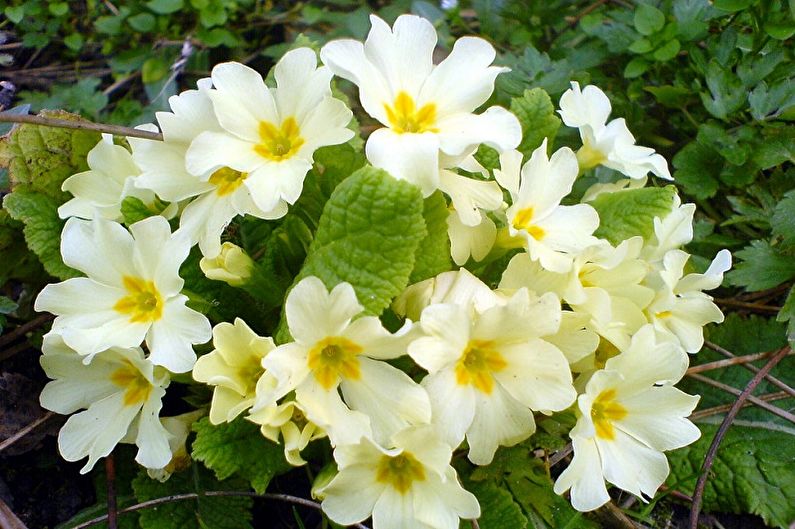
Primrose high
It blooms before all other species and endures winter in the wild. The length of its stems reaches 30 cm, but the flowers themselves are small - up to 2 cm. The color of wild-growing tall primroses is rather modest - usually it is a uniform lemon, white or raspberry tone with a yellow core.
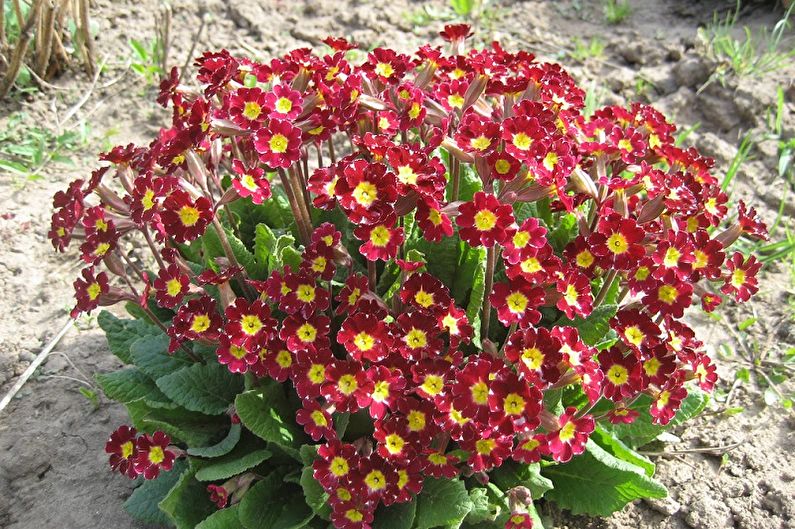
Polyanthus primrose
This is a hybrid based on high grades. The diameter of the flowers is larger, and the coloring is more interesting - here there are already red, orange, purple, purple and even brown tones.

Planting and reproduction of primrose
Most primrose species are perennials, so a single plant can live in a pot or outdoors for more than ten years.Reproduction is carried out mainly by seeds or division of the bush, very rarely - by cuttings.
Sowing seeds it is advisable to carry out no later than 6 months after collection, as they quickly lose their germination. The ideal time to start the process is December-January, so that by the time the shoots appear, the sunny day is already long.
Seeds are sown in light garden soil on the surface and do not fall asleep on top. The first 3-4 weeks, the lidded container with moistened soil and crops is stored in the refrigerator - on the warmest shelf or in the doors, at a temperature of about + 5C. It is important that the substrate does not dry out at this time.
After such an “artificial winter”, the container is transferred to the windowsill (eastern or western) and the lid is opened for air to access the sprouts. Young shoots of primrose should always be in partial shade, they also need high humidity and a minimum of heat (no more than + 12 ... + 15C). In summer, seedlings should be protected from direct sunlight and drying out the soil. In general, it will take a year and a half to transplant seedlings into open ground, and it will begin to bloom only in the third.
Bush division - The most convenient and affordable way to propagate primroses. For this, an adult 3-5-year-old plant is dug up and divided into parts so that each contains at least one bud with roots. This is best done immediately after the end of the flowering period, after feeding the mother bush with nitrogen fertilizers. Separated sprouts are planted in a permanent place in holes or new pots, deepening to the previous level, after which they are compacted and regularly watered.
Cutting primrose carried out if there are no roots for division. In this case, the shoot is cut off at the soil level, which is planted in a moistened mixture of garden soil and river sand. The sprout is left in a bright place at + 18C until leaves appear, after which it is ready for planting.
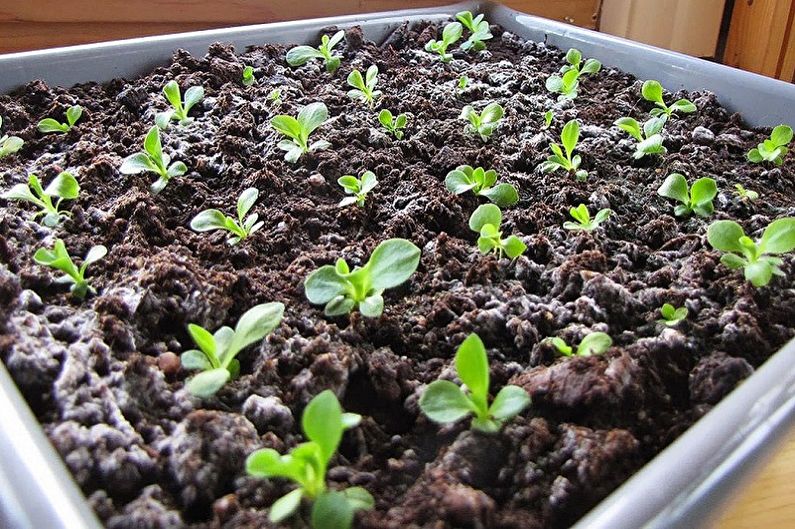
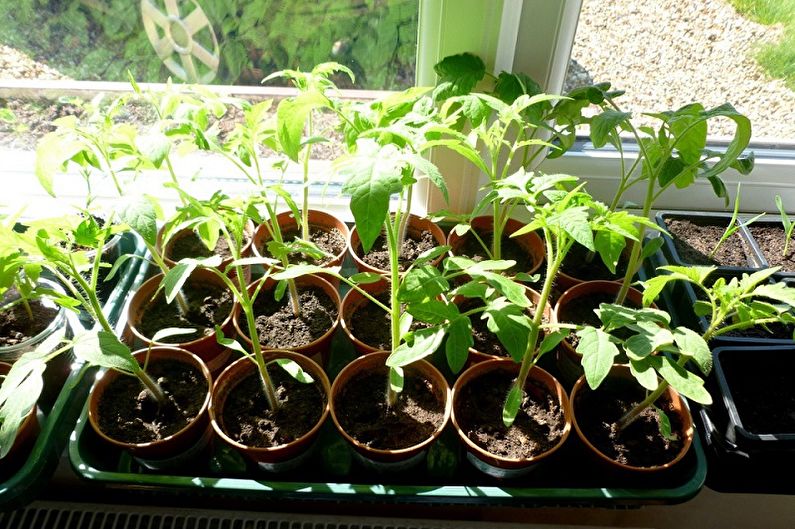

Primrose Care
Given that the climate of the middle zone for primroses is quite familiar, this plant can not be considered capricious. An exception is some late-flowering varieties that do not tolerate frost. So, undersized and large-flowered species will need to pay more attention than the "wild" with high stems - for example, for the winter, these bushes are recommended to be covered with a large layer of mulch. In general, primroses are unpretentious, and anyone can grow them.
The soil
The soil for primroses should be loose, well permeable to moisture and air. At room conditions, you can take a mixture of sheet land, peat and river sand in equal proportions. At the bottom of the pot, be sure to put a good drainage layer. When planting on the street, humus, sand, rotted leaves, and needles should be added to the soil. Heavy clay and rocky soils should be avoided - moisture stagnation, like drying out, is detrimental to these plants.
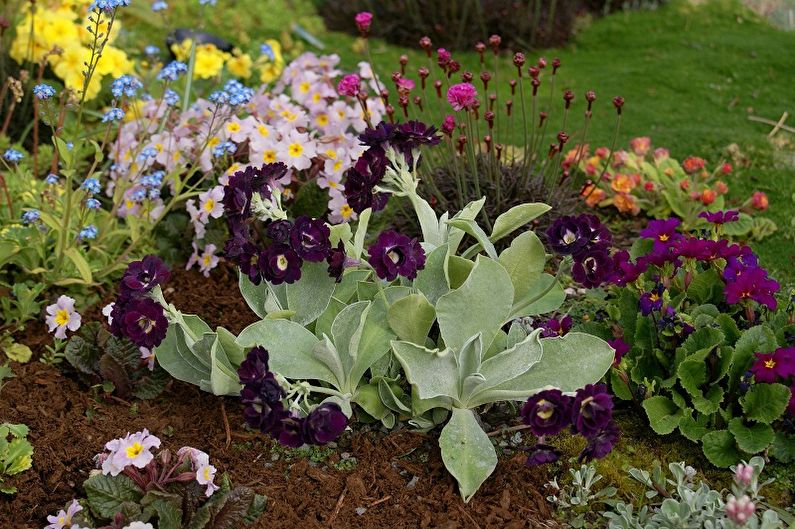
Lighting
Primroses love slightly shaded areas, but in the morning and evening hours the sun should well illuminate the flowerbed. Indoor primrose should not be left on the southern windowsills - it is better to move them inland.
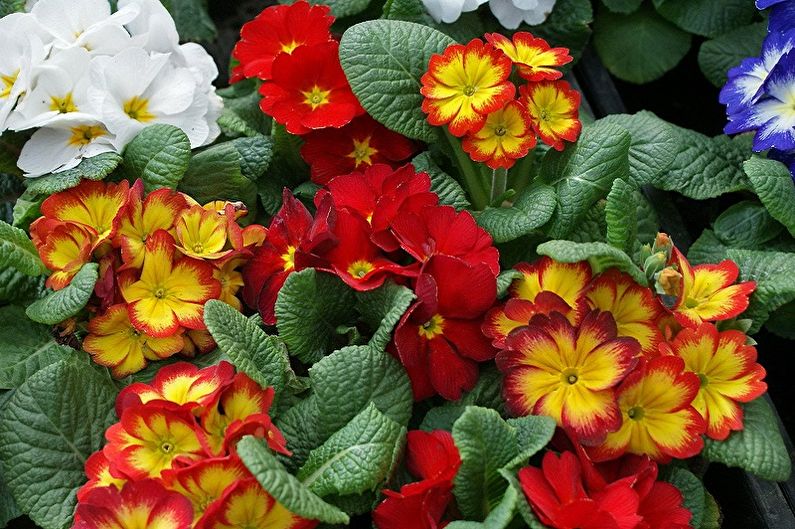
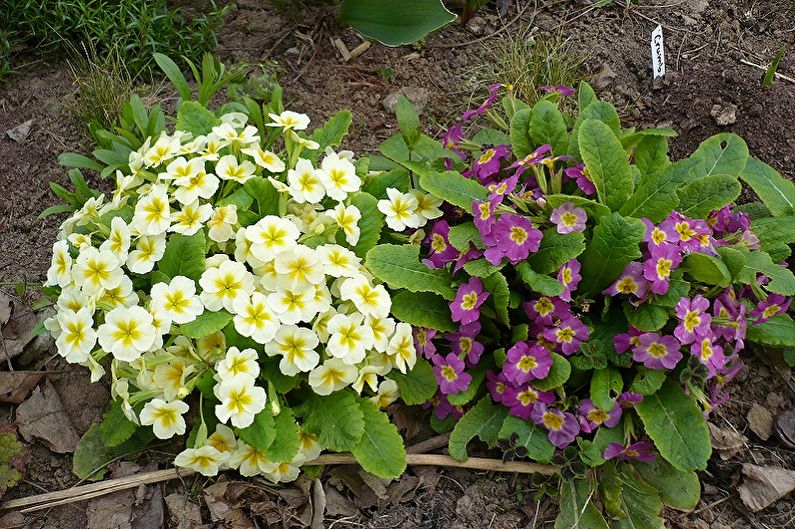
Moisturizing
It is often necessary to water primrose so that the substrate constantly remains moderately moist. Spraying will be needed only with excessively dry or hot air, although it is enough to simply remove the pot with the plant in a cool place. It is enough to moisten garden primroses only at the stage of rooting seedlings. If the place is cool and shady, in the future the primrose will have enough rain.
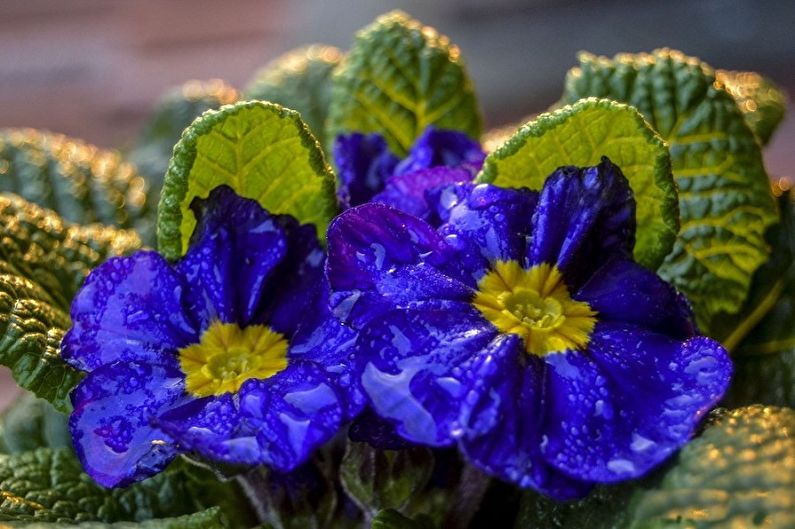
Top dressing
To make the bushes look healthy, in early spring they are watered with a weak solution of mineral fertilizers for flowering plants, following the instructions. In early summer, under the root, you can add organic matter, for example, humus. In August, primrose is fertilized with a small amount of ammonium nitrate or potassium (15 g per 10 l of water) and superphosphate (20 g per 10 l of water).
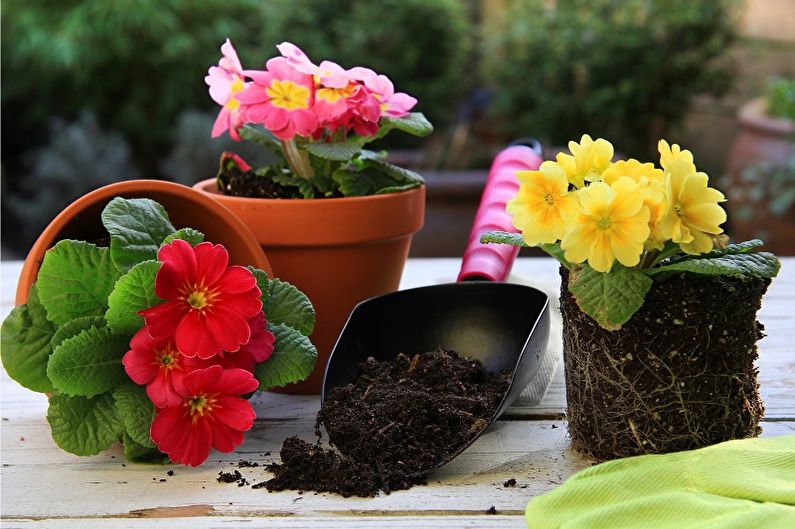
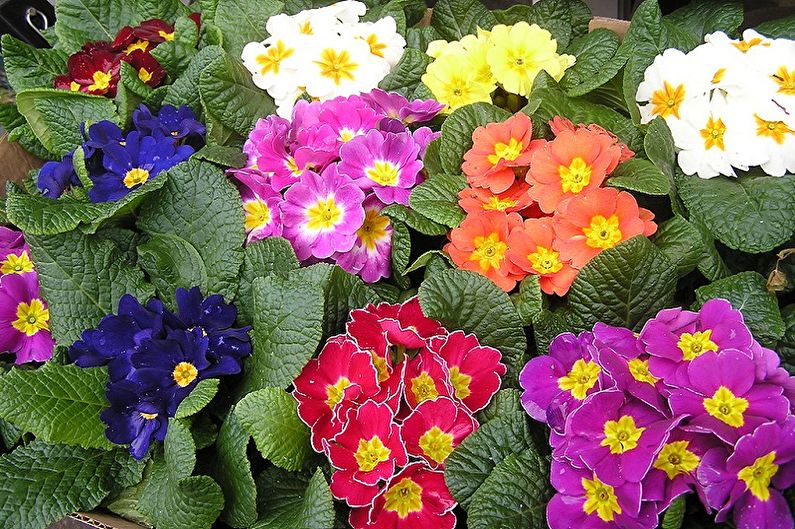
Pest and Disease Control
Compliance with these conditions is the guarantee that plants will be strong and flowering, but sometimes even the right agricultural technology does not save from the attack of insects or diseases. In the fight against them, special drugs will help - insecticides and fungicides. Ordinary pharmacy solutions that are in every home, or folk remedies are sometimes very useful: ashes, tinctures of garlic, onion husks, shag, aloe juice, etc.
The main pests of primrose:
Nematodes - impersonate swellings and curvatures of stems. To get rid of them, the soil is treated with sulfur. In the flower beds, marigolds growing in the neighborhood will serve as a good preventive measure.
Aphids - appears with a lack of phosphoric acid, and you can notice it by sticky white or black dots on the stem and on the inside of the leaves. To eliminate, you can use insecticides or bioactive agents, an infusion of garlic, onions or tobacco leaves, a soap solution (100 g tar oil per 10 liters of water), an infusion of ash (1 glass of ash in 5 liters of water, withstand 12 hours).
Slugs - can harm primrose if it grows on a too wet area or if it rains for a long time. You have to collect the snails manually or transplant the bushes to a drier place.
Primrose diseases mainly provoke fungi. They can appear in the form of rust on leaves, gray and brown spots, rot on the roots and stems. To eliminate harmful spores, spraying with Bordeaux liquid or Fitosporin helps to eliminate, but the main thing is to prevent waterlogging of plants by properly regulating watering.
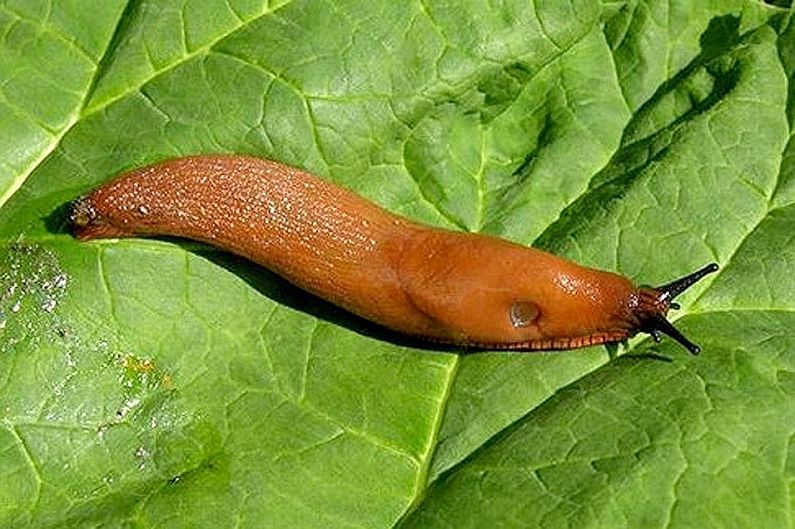

Primrose - photo
In our photo gallery you will find many images with primroses. Here are collected photos of various types and varieties of primrose, which can become a bright spring decoration for the interior or garden.
In compositions with other plants or even primroses themselves, they create an attractive pattern on flower beds, rocky hills, around ponds, along paths and paths. One glance at the festive shades of primrose is enough to forever be fascinated by their radiant beauty and with emotion enjoy these flowers in your apartment or in the country.
